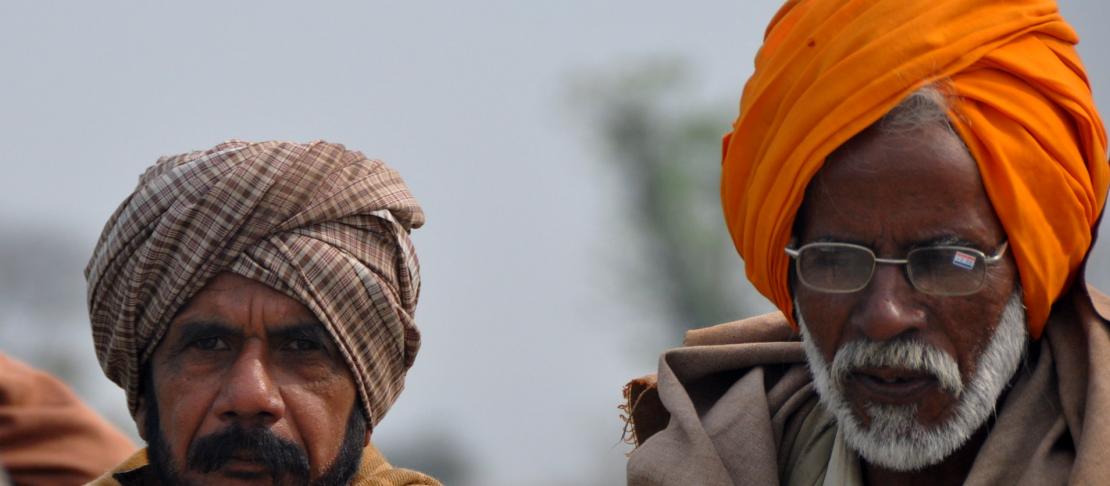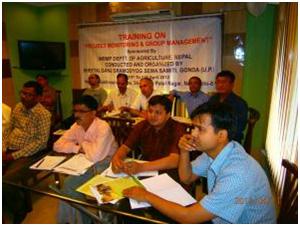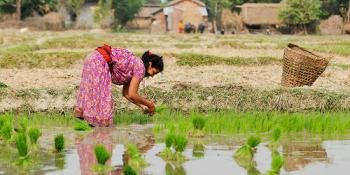Reaching out to agriculture officers in Nepal with climate smart information

by Gopal Bhatta
Gopal Bhatta, Science Officer for the South Asia region, recently participated in a refresher workshop organized by Sheetal Ganj Gramodyog Sewa Samiti, New Delhi, India. The workshop included sessions that ranged from climate smart agriculture to group dynamics in resource management which attracted a total of 12 District Agriculture Officers and agriculture engineers from different parts of Nepal. Gopal talked to the officers about climate smart agriculture and how it could be piloted and up-scaled in different parts of Nepal. This blog post is a summary of the session held by Gopal Bhatta in late April.
Sensitizing climate change issues
In the first half of the workshop, the officers were sensitized on climate change issues that the world has been facing recently and will have to face in the upcoming future, in general but also in Nepal. The session started from general empirical findings from around the world followed by climate change evidence in Nepal. Participants discussed in depth the research findings that predict decline in yield of major cereals in South Asia with rising global temperature. Nepal’s temperature has been increasing at 0.060C each year and the models predict that productivity of key crops will be reduced with this rising temperature and rainfall variability in Nepal in the near future.

Mr. Rajan Dhakal, Agriculture Officer at Department of Agriculture, Kathmandu, said however that generalizations couldn’t be made using results from other countries. He added that we lack climate change research and particularly the effect of rising temperature on yield of major crops in Nepal. He further pointed out that the country has such a diversity of agro-ecology that it would be very difficult to predict what would happen in the productivity of the crops with rising temperature. District Extension Officer of Dadeldhura, one of the far western and poverty stricken districts in Nepal, remarked that farmers in his district are getting out of the agriculture profession with climate change being one of the reasons to this trend. “We are distributing mini-kits to the farmers as one of the social safety nets but now time has come to establish community based seed banks that would help farmers supply seeds during the time of adversity” he said.
All of the officers agreed that climate change has been happening in the country which is also why they participated in the workshop, about what would be the potential steps and strategies or technologies that should be taken into account for making agriculture systems more resilient. They also mentioned that they are ready to incorporate climate change adaptation and mitigation activities in their annual planning documents. During the session, negative repercussions of climate change and climatic variability in Nepalese agriculture and food security was explained in detail. More specifically, the discussion was related to vulnerability to climatic risks, cost of climate change adaptation and adaptation measures.
Climate smart agriculture: A roadmap to sustainable intensification
The second half of the session was mainly focused to an introduction of climate smart agriculture and its implementation procedure that suits local agro-ecology of Nepal. The participants were all interested to learn more about climate smart agriculture. While talking about six pillars of climate smart agriculture (weather-, water-, fertilizer-, knowledge-, carbon- and energy smart), much of the attention went towards making farmers weather smart. After explaining the importance of weather information to the farmers, agriculture officers realized that this is one of the key inputs and even more important than other basic inputs in agriculture.

Unfortunately Nepal’s weather forecasts are not reliable to the degree it should be, added District Agriculture Officer from one of the most remote districts of Nepal, Jumla. He said “Jumla district is one of the most food insecure districts in Nepal and physical inaccessibility along with the effect of climate change is making lives of the people very hard”. “I am ready to incorporate climate smart agriculture activities in my next year plan but I am still seeking for the practical implementation path that is suitable to the high altitudinal area like Jumla”, he added. In response to this, Bhatta suggested him and other officers that they should start with awareness raising program for the first year and then start with implementation part in the following years and, in meantime, if they need technical assistance, CCAFS South Asia program would be ready to assist any of the extension officers in Nepal. You are the extension agents and you are the one who have to work with farmers and farmers listen to you very carefully, Bhatta further added. They stressed that they will put their endeavours to include climate smart agriculture in their planning document from the next year and take much seriousness towards awareness generation and technological demonstration, at least in the few villages.
The workshop received funding support from Irrigation and Water Resources Management Project (IWRMP), Government of Nepal and took place from 10 to 21 April 2012.
Gopal Bhatta is a Science Officer of the CGIAR Research Program on Climate Change, Agriculture and Food Security (CCAFS) South Asia benchmark site.
